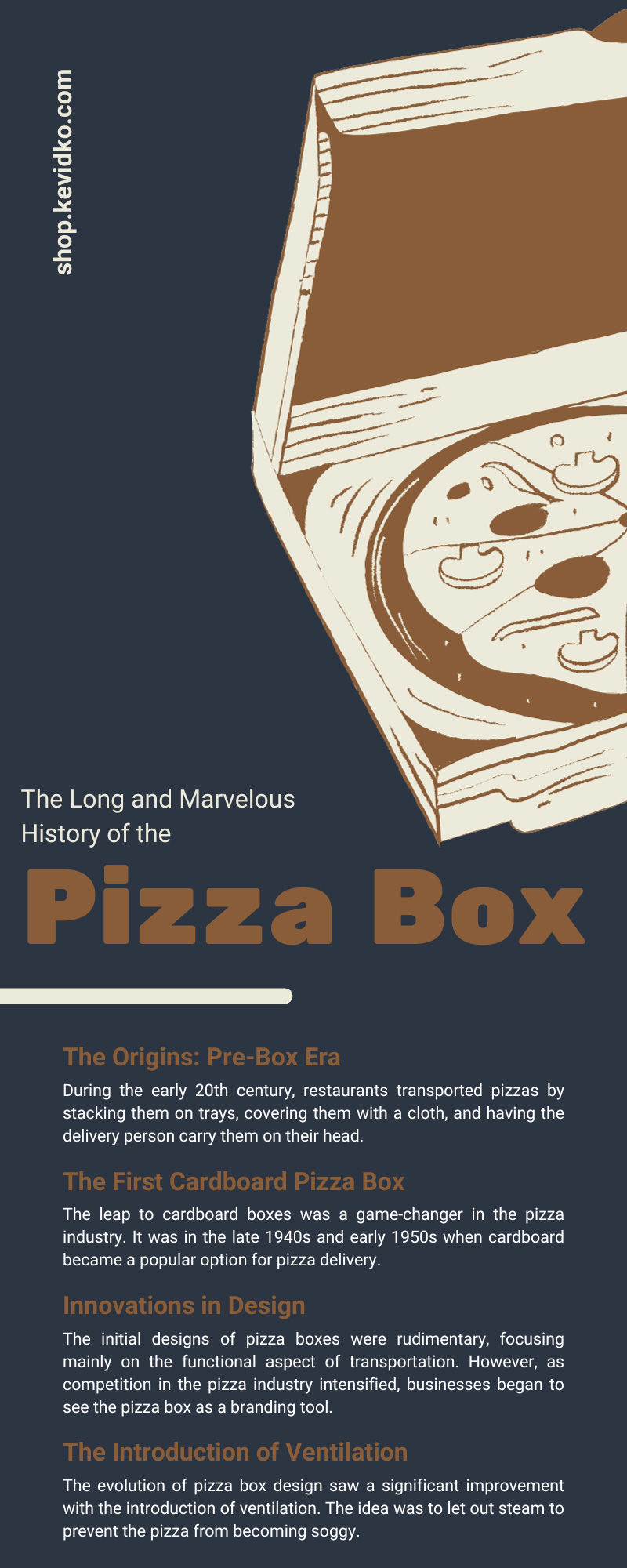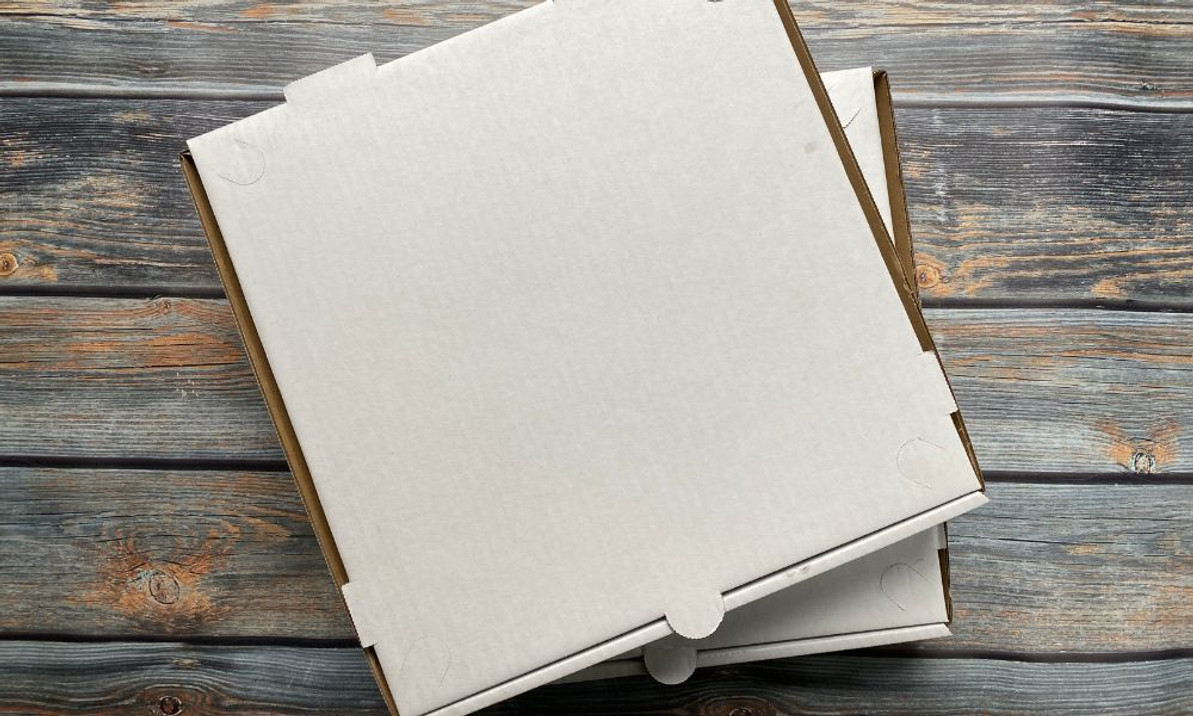The Long and Marvelous History of the Pizza Box
Pizza, a beloved dish worldwide, is not just about the flavors and toppings; it’s also an iconically portable product. Central to this on-the-go experience is the pizza box—an unsung hero in the culinary world. The history of the pizza box is as rich and varied as the dish it contains, marking an evolution driven by practicality, innovation, and cultural shifts. Read on to discover the long and marvelous history of the pizza box.
The Origins: Pre-Box Era
Long before the advent of the cardboard pizza box, pizzerias faced the challenge of keeping pizzas hot and intact during delivery. During the early 20th century, restaurants transported pizzas by stacking them on trays, covering them with a cloth, and having the delivery person carry them on their head. This method, while creative, often led to heat loss and compromised the quality of the pizza. The need for a better solution was clear, paving the way for the development of the first pizza boxes.
The First Cardboard Pizza Box
The leap to cardboard boxes was a game-changer in the pizza industry. It was in the late 1940s and early 1950s when cardboard became a popular option for pizza delivery. This transition stemmed from the increasing popularity of pizza as a fast-food item and the need for a more effective way to transport it. The cardboard box provided a cheap, stackable, and disposable solution, significantly addressing hygiene and convenience factors.
Innovations in Design
The initial designs of pizza boxes were rudimentary, focusing mainly on the functional aspect of transportation. However, as competition in the pizza industry intensified, businesses began to see the pizza box as a branding tool. This realization led to innovations in box design, incorporating brand logos, catchy slogans, and distinctive artwork. The pizza box became more than a container—it was now a canvas for marketing and visual appeal.
The Introduction of Ventilation
The evolution of pizza box design saw a significant improvement with the introduction of ventilation. The idea was to let out steam to prevent the pizza from becoming soggy. Early solutions included perforated lids or small vents, while more recent designs feature intricate patterns and shapes for ventilation. These innovations significantly improved the quality of delivered pizzas, making them as enjoyable at home as they were in the pizzeria.
The Corrugated Box Revolution
The 1960s also saw the widespread adoption of corrugated cardboard for pizza boxes. The fluted layer of corrugated cardboard provided superior insulation compared to flat cardboard, keeping the pizza warmer for longer. It also added structural strength, making it easier to stack and transport multiple boxes. The corrugated box was a leap forward in pizza delivery technology, combining practicality with cost-effectiveness.
Flat-Top Boxes and Easy Storage
The introduction of flat-top boxes was a response to practical challenges in storage and transportation. These boxes, delivered flat to pizzerias, were space-efficient and easy to store. Employees could quickly fold them into shape as needed, a feature particularly beneficial for small pizzerias with limited space. The design of these boxes also improved over time, enhancing the ease of folding and the stability of the assembled box.
The wholesale market has also adapted to the diverse needs of different pizza businesses, offering an array of sizes, shapes, and customized designs. This flexibility allows pizzerias to maintain brand consistency and efficiency in their operations.
Customizable and Themed Boxes
Customizable and themed pizza boxes have become a key marketing tool for many businesses. These boxes reflect specific themes, such as holidays, local events, or popular culture, making them more appealing and relevant to customers. This customization extends to personalization options for special occasions such as birthdays or anniversaries, allowing customers to add a personal touch to their orders. Such themed and customizable boxes enhance the customer experience, making the pizza box an extension of the celebration.
Eco-Friendly and Sustainable Options
The push toward sustainability significantly influenced the design of pizza boxes. In recent years, we have seen a surge in eco-friendly pizza boxes made from recycled materials. These sustainable options are better for the environment and resonate with environmentally conscious consumers. Innovations include compostable boxes, boxes with minimal ink and dyes, and designs that reduce the amount of material used. Some companies have even introduced plant-based boxes, reducing the carbon footprint associated with traditional pizza box manufacturing.
The Deep-Dish Box
Deep-dish pizzas, with their thick crust and abundant toppings, require a different type of packaging. The deep-dish pizza box must be taller and more robust to prevent the lid from touching the toppings and ensure that the pizza retains its shape and quality during transport. These boxes must also have stronger corners and sides to support the additional weight of a deep-dish pizza, ensuring that the product arrives in perfect condition to the customer.
Technological Integrations
The integration of technology into pizza box design marks a significant leap. QR codes printed on boxes can link customers to interactive content such as menus, special offers, or entertainment. Some boxes even incorporate augmented reality features, turning the humble pizza box into a fully interactive experience. This adds value to the customer and provides businesses with unique marketing opportunities, enhancing brand engagement in an increasingly digital world.
The Future of Pizza Boxes
Looking ahead, innovation will surely continue to drive the future of pizza boxes. We might see further advancements in eco-friendly materials, smart packaging that can monitor the temperature and freshness of the pizza, or even more interactive elements that delight customers. Much like the pizza itself, the pizza box is set to evolve with changing technologies and customer expectations. No matter what changes may come, one thing is for sure: there will always be 12" wholesale pizza boxes for pizzerias across the world.
Now that you know the long and marvelous history of the pizza box, it’s clear that it’s more than just a container for carrying a beloved dish. It’s a symbol of innovation, cultural shifts, and an ever-evolving industry. From simple cardboard to high-tech, eco-friendly designs, the journey of the pizza box mirrors the dynamic nature of the food industry and customer needs. As we look forward, the potential for further innovation in pizza box design and functionality continues to excite and surprise.

Recent Posts
-
Why Portion Cups Are Essential for Condiments
Condiment service can make or break the dining experience at your restaurant or catering event. Why …Dec 18th 2025 -
Pros and Cons of Cardboard Catering Boxes
Selecting the right packaging is a fundamental decision for any catering business. The containers yo …Dec 11th 2025 -
How To Choose the Best Aluminum Foil Containers for Food
Selecting the right containers for your restaurant or catering business affects everything from food …Dec 10th 2025




